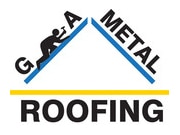Roof LEAKS
Early detection of roof leaks

You need a company who has specific knowledge about how to repair roof leaks, not just a roofing company who only sells complete re-roofing options.
Roof leaks are a common problem that many home owners experience here in Auckland. Most often, these home owners are faced with the unexpected and unwanted cost of installing a new roof.
Temporary roof repairs can be a viable option for some, but keep in mind that that while roof repair costs can be a lot less than replacing the entire roof this is still just a temporary solution.
Many times roof repair companies can repair roof leaks but this solution does not change the age of your roof or the condition of the roof.
The Trick to Finding the Roof Leaks
What typically happens is your roof leaks and by the time the time the roofer gets there to find the source, the rain is gone. He looks around and cannot find anything that would leak in normal conditions.
The trick is to be able to look at the roof as if it is still raining and you will be able to see a whole bunch of new areas that the leak could be coming from.
Leaking Roof Causes
Age and Exposure – Age and exposure are the natural enemies of roofing materials. Exposure to the sun, rain and wind eventually breaks down roofing materials and cause roof leaks.
Improper Installation – A very common and avoidable problem that may also cause the need for roofing repairs is improper installation. Manufacturer warranties are only valid if the roofing marerials have been installed correctly. Since most roofing installers are paid by the number of squares meters installed, correct placement of the roofing nails may be sacrificed in an effort to complete the roofing in a timely manner.
Water Testing Procedure
Sometimes, in order to find the source of a leak, you need to be able to think logically, and think ‘like a drop of water’. You need to know things like
- what conditions will create capillary action
- how much wind it takes to blow water up hill
- how high water can splash
- how much volume of flow would be in a certain area of the roof during a big storm
Once you know the basics you can do some water testing with a hose on a dry day. You need two people. One person inside to watch for water ingress; and the experienced person on the hose. The three biggest mistakes that people make with water testing are:
- Not starting at the bottom. If you start up high and it leaks you don’t know if the leak is up where you are spraying the water or if it’s at some lower point where the water is running to.
- The second mistake is to spray the water in a way that would not occur in a natural rainstorm. This is why you need to know the fundamentals of how rain comes down in a storm and how it moves once it hits your home.
- The third most common mistake in water testing is not leaving enough time on each of the lower spots before moving higher up on the home or roof. Sometimes it takes an hour or two in a normal rain for the roof leak to become visible because of the distance the water has to travel or because the entry point of the leak is very small. Before you start water testing you should know how long it has to rain before the leak become visible.
There are other ways to detect leaks also; with moisture meters, opening up walls from the inside, and thermal imaging cameras etc. but the above methods are simple to do with just a little knowledge.
NEED ROOF REPAIRS IN AUCKLAND?
We can give you a NEW ROOF, a RE-ROOF and all MAINTENANCE and roofing REPAIRS.
WHAT MAKES US THE FIRST CHOICE?
WE take time to LISTEN TO WHAT YOU WANT and give you accurate advice.
WHY CHOOSE A METAL ROOF?
Our metal roofs come with a 10 YEAR WARRANTY
Location
109 Dominion Road , Papakura Auckland 2110
